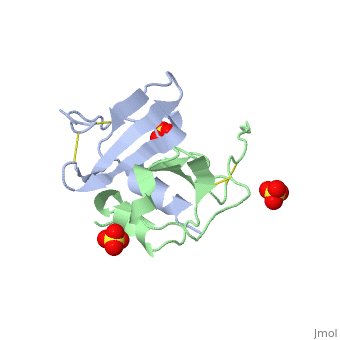Function
C-X-C motif chemokine (CXCL) are small chemokines which contain the sequence Cys-X-Cys at their C-terminal. The CXCL are subdivided into 2 groups: ELR positive (containing Glu-Leu-Arg preceding the C-X-C) and ELR negative.[1]
• CXCL2 or MIP-2 or imacrophage inflammatory protein 2 acts as chemotactic for polymorphonuclear leukocytes and hematopoietic stem cells.
• CXCL3 or platelet factor 3 is involved in the development of prostate cancer[2]
• CXCL4 or platelet factor 4 is a pro-inflammatory compound[3]
• CXCL7 or platelet factor 7 promotes neutrophil adhesion and transmigration[4]
• CXCL10 or IP-10 or interferon γ-induced protein 10 acts as chemoattractant for monocytes, T cells NK cells and dendritic cells. CXCL10 binds to the cell surface receptor CXCR3[5]
• CXCL11 or IP-9 or interferon γ-induced protein 9 acts as chemotactic for activated T cells.
• CXCL12 or Stromal-Derived-Factor-1 (SDF1) has a role in angiogenesis, tumor metastasis and the migration of cells from the liver to the bone marrow during embryogenesis[6]
• CXCL14 or BRAK acts as chemotactic for monocytes and inhibits angiogenesis.
Relevance
CXCL4 plays an important role in pancreatic inflammation and can be targeted to ameliorate tissue damage in pancreatitis. Levels of CXCL4 are elevated in patients with systemic sclerosis[7]. CXCL12 may be involved in the immune defense pathway during periodontal disease[8].
3D Structures of C-X-C motif chemokine
C-X-C motif chemokine 3D structures

